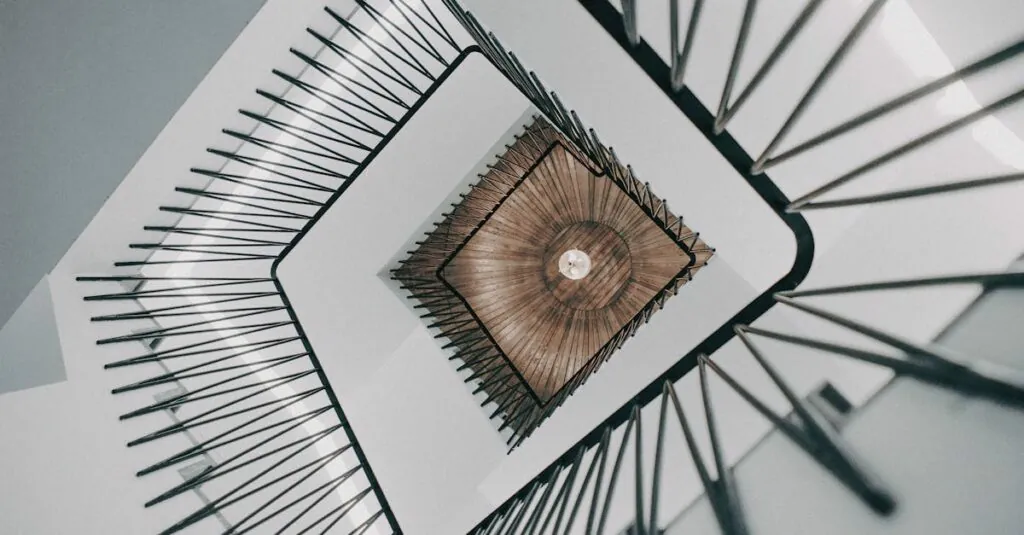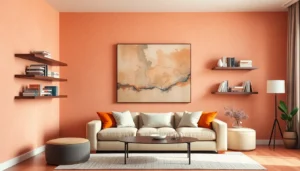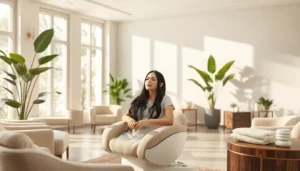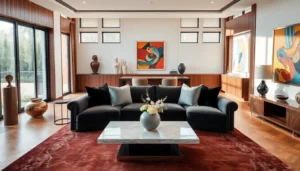In a world where buildings are more than just four walls and a roof, architectural detail focus takes center stage. It’s the secret sauce that transforms mundane structures into breathtaking masterpieces. Imagine walking through a city filled with cookie-cutter designs, only to stumble upon a building that makes you stop and stare. That’s the magic of thoughtful details—those intricate carvings, unique materials, and unexpected features that spark joy and curiosity.
Table of Contents
ToggleUnderstanding Architectural Detail Focus
Architectural detail focus highlights the significance of design elements that elevate structures beyond mere functionality. It shows how these details can leave lasting impressions, enhancing the overall character of buildings.
Definition and Importance
Architectural detail focus refers to the specific design elements that contribute to a building’s aesthetic and functional appeal. Such elements include windows, moldings, and decorative features. These details create visual interest and convey the building’s style, influencing how people perceive and interact with the space. A well-executed detail can transform a simple façade into an engaging experience. Subtle variations can evoke emotions and invite exploration. The significance of these elements lies in their ability to enrich the architectural narrative.
Historical Context
Historically, architectural details reflect cultural values, technological advancements, and artistic movements. In classical architecture, elements like columns and pediments established grandeur. The Gothic era introduced intricate stone carvings and pointed arches. Each period brought unique detailing, showcasing craftsmanship and innovation. The Industrial Revolution shifted focus to functional materials, yet ornate details continued to resonate. Modern architecture emphasizes minimalism, yet details play a vital role in establishing identity and context within urban landscapes. Recognizing this history fosters an appreciation for the ongoing evolution of architectural expression.
Key Elements of Architectural Detail Focus
Architectural detail focus encompasses various essential elements that contribute to a building’s character and functionality. Understanding these key components enhances both aesthetic appreciation and practical application.
Material Choices
Choice of materials significantly impacts architectural details. Stone offers durability and timelessness, while wood adds warmth and texture to spaces. Glass provides transparency and fluidity, allowing light to permeate interiors. Additionally, metal accents introduce a modern edge, contrasting beautifully with traditional materials. Innovative composites and sustainable options redefine contemporary architecture. Exploring these materials reveals their unique benefits and how they complement design intentions, shaping the overall experience of a building.
Design Techniques
Effective design techniques emphasize the importance of proportion and scale. Architects often incorporate hierarchy to guide the viewer’s eye through structures. Employing texture variations creates visual interest, while strategic lighting highlights specific features. Incorporation of symmetry impacts balance and harmony in design, ensuring aesthetic appeal. Personalized ornamentation expresses individual style and cultural significance, enriching the architectural narrative. Each technique plays a crucial role in enhancing details and fostering engagement with the environment.
Examples of Architectural Detail Focus
Architectural detail focus manifests through notable buildings and innovative designs. Each example highlights unique elements that enhance aesthetic quality and functional purpose.
Notable Buildings and Structures
Fallingwater by Frank Lloyd Wright exemplifies harmony between nature and architecture. The organic integration of water features and natural materials demonstrates a seamless relationship with the environment. The Guggenheim Museum in New York showcases a spiraling form, emphasizing movement and flow through its ramped interiors. This design invites visitors to engage with art differently. The Sydney Opera House features distinct sail-like structures, creating a dynamic skyline and serving as an iconic representation of architectural brilliance.
Innovative Designs
Zaha Hadid’s Heydar Aliyev Center challenges conventional forms with its fluid lines and organic shapes. Each curve contributes to a sense of continuity, enhancing the visitor experience. The Blur Building in Switzerland uses mist as a unique façade, creating a shifting, ephemeral structure that redefines perception. Stainless steel sculptures like Anish Kapoor’s Cloud Gate reflect the surrounding cityscape, engaging viewers through interactive reflection. These innovative approaches reveal how architectural detail focus contributes to transformative experiences within built environments.
Challenges in Achieving Architectural Detail Focus
Achieving architectural detail focus poses various challenges that architects and designers encounter during the creative process.
Technical Limitations
Technical limitations often hinder the execution of intricate architectural details. Constraints can arise from structural requirements that prioritize stability over aesthetic appeal. Specialized materials may present compatibility issues with existing systems, complicating design execution. Furthermore, achieving precise detailing requires advanced technology and skilled craftsmanship, which can be difficult to acquire. Maintaining quality while meeting safety regulations adds to the complexity, creating a balance between artistic vision and practical needs. Architects may find themselves revising designs to accommodate these limitations, ultimately affecting the overall detail focus.
Budget Constraints
Budget constraints distinctly impact the realization of architectural detail focus. Financial resources often dictate the choice of materials and design elements, leading to compromises. Limited funding can result in simplified details or the use of less expensive materials, which may not achieve the desired aesthetic effect. Moreover, the cost of labor for skilled craftsmen influences the complexity of design execution. Architects frequently must prioritize essential features over intricate details to remain within budget. Creative solutions, such as using standard elements innovatively, help navigate financial challenges while still striving for architectural beauty.
Architectural detail focus serves as a vital element in the creation of memorable spaces. By emphasizing unique design features and material choices architects can elevate a building’s character and functionality. This focus not only enriches the aesthetic experience but also deepens the connection between people and their environments.
As architectural styles continue to evolve the importance of details remains constant. They reflect cultural values and artistic movements while pushing the boundaries of creativity. Embracing architectural detail focus allows for innovative solutions that transform ordinary structures into extraordinary landmarks. Ultimately this approach fosters a greater appreciation for the intricate narratives woven into the built world.






